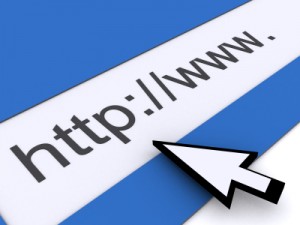 At the end of November, Google quietly released their first website using the new .google gTLD. Although active, nic.google actually redirects to a subsite on the main google.com domain where the web services giant outlines a number of new initiatives, including its desire to become administrator of a number of other new gTLDs including .zip, .new and .dad.
At the end of November, Google quietly released their first website using the new .google gTLD. Although active, nic.google actually redirects to a subsite on the main google.com domain where the web services giant outlines a number of new initiatives, including its desire to become administrator of a number of other new gTLDs including .zip, .new and .dad.
What is most interesting about the new address though is that Google has acquired the rights to the gTLD that matches its brand name – .google.
Protecting copyright
For a global brand like Google, protecting copyright and brand image is a major ongoing concern. Little wonder then that they have successfully applied for, and won, the rights to the .google domain. Google can now ensure that only approved website addresses are registered using .google.
With complete control of the gTLD, Google can now protect their brand against scammers who may try and use similar website addresses to defraud web users. Google can also ensure that websites that promote ideas or products against their own ethical stance, such as hate speech or racism, are not mistakenly associated with their brand.
Claiming another corner of the Internet
The .google domain is just one which Google now controls. .soy, targeted at Google’s growing Hispanic market, is now open for applications from businesses and individuals. Google is manually reviewing applications to ensure early adopters meet the general standards expected of sites using the domain. The system will be opened for automated domain name purchases from October next year.
Although Google will control this particular address system for the foreseeable future, there are literally millions of other options available thanks to the new gTLD system.
A tactic for all businesses?
Google is a trendsetter, establishing new practices and technologies that have the potential to disrupt traditional business practices. So should all businesses be looking at following Google’s lead and registering the gTLD that corresponds to their business name?
The gTLD application process is complicated, long and costs a staggering $185,000 USD. Worse still, the application fee is not refundable in the event of a rejected bid. There is also the potential that disputed gTLDs, like .cloud, could cost considerably more.
Ultimately registering gTLDs is far too expensive for most smaller businesses – even if they wanted to, they simply could not afford to do so.
Creativity is king
For smaller businesses, a far more economic option is to register a website address using an existing top level domain like .co.uk or .com. Obviously it is getting harder to identify a unique, meaningful address, which is why businesses will need to be more creative when setting up a new company or website.
That said, the new gTLD addresses have created plenty of options to exercise creativity, or to help pick a domain name that relates to their industry. .bar, .london, .shop, .club – there are literally millions of options, with more on the way as new gTLDs are approved.
Leave a Reply